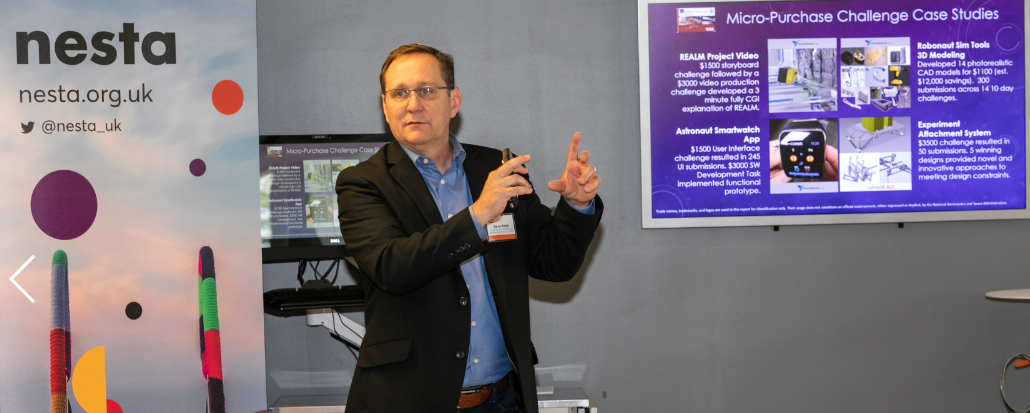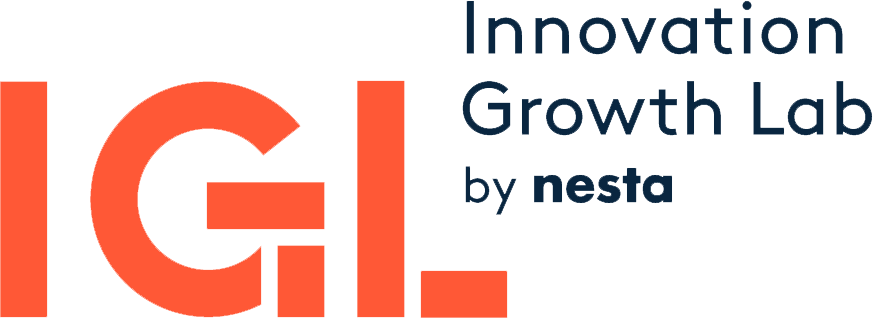
Starting an Open Innovation (OI) programme within an organisation can be daunting. It is clear that OI methods like crowd-based challenges can provide access to valuable innovations and tap into experts and creatives from around the world. However, creating a programme within an organisation that actually gets the organisation to use open innovation as part of the normal process and culture is no small task. For the last seven years, NASA’s Center of Excellence for Collaborative Innovation (CoECI) has been working to bring open innovation to NASA using crowd-based challenges and helping other federal agencies do the same... but the team still feels like we are just getting started!
CoECI has been able to scale up from a few pilot projects to our current programme that leverages 16 different crowd-sourcing communities across 4 different contracting mechanisms, which has resulted in over 300 challenges in support of NASA and 13 other federal agencies. These efforts have resulted in completely solving challenges almost 40% of the time, and positively contributing to project progress over 90% of the time.
Here are seven things that were helpful to our group as we scaled up our OI programme.
1. Understand and Focus the Organisation's Goals for Open Innovation
It was very important to get and maintain senior leadership champions early on and to focus the programme on finding innovative solutions that are valuable to the organisation. The workforce (and middle management especially) have a keen ability to detect a lack of support from upper management. Many times, management pays lip service to innovation, so it is important to provide tangible tools and methods. Deep down, workers want to be innovative, but they know that often organisations are 'all talk and no action' (or worse, and are so focused on getting a product out the door that they actively reject innovation).
2. Build an OI Team with the Right Skills
An open innovation team is effectively a brokerage. The team must internally connect with groups and projects to identify problems or challenges and then match those to the right form and platform to get a successful result. If at all possible, find people that are knowledgeable and passionate about open innovation. We have run into a number of open innovation groups who have clearly been “assigned” to make innovation happen by a senior leader who is passionate. Those groups seem to struggle. As the team must play the brokerage role, it is important to have some team members that are well connected in the organisation, understand the domain of the problem owners or projects, and can communicate well. However, the team also needs to be able to tap into skills like contracting, legal/IP, metrics/data analytics, and process development. Some of these can be matrixed in, but OI tends to require some creativity to get it to fit into an organisation's procurement and legal frameworks.
3. Know Your Customer
In a large organisation, it is important to really understand your audience when you bring them this wonderful new set of tools that you believe will change their lives. Many organisations are focused on getting a product out the door or maintaining high reliability (uptime) systems. For these people, change and disruption to their core tasks is the enemy. However, those same groups face the same issue as everyone else: if they don’t work to innovate and improve, eventually they will be obsolete. Acknowledging their predicament is helpful and allows you to work with them to carve out some separate time and space to seek improvements and innovations.
4. Promote the Big Picture - Own the Problem
It is important to break out of incrementalism where organisations only invest in safe, near-term improvements and neglect the big innovations that are really required for the longer term. We are finding that we have to work with projects and groups within the organisation to help them take a step back, see the big picture, and set some bold goals. We then work to understand the gap between where they are and where their bold goals lie. This is followed by a facilitated problem decomposition to understand the specific, major challenges that must be overcome to achieve the bold goal. These challenges provide great opportunities to use Open Innovation tools and the problem decomposition process tends to achieve buy in from the project or group.
5. Sell It
Since these tools are new, it is not enough just to market. You have to sell it. There is a big difference between marketing and sales. Marketing is telling people about something. Sales is getting together one-on-one with them to understand their problem and fit that problem with a tool most likely to solve it. We have seen time and time again that simply presenting a compelling story about the wonders of OI does not translate into significant adoption without some direct contact. Left to themselves, most people will hear the message, but not connect it to their own work (which often goes back to point 4). Marketing is still important in generating leads, but ultimately you have to get with the customer and close the deal.
6. Implement Lightweight Processes
One of the things that has really contributed to our success and has allowed us to do more with a small team has been the implementation of lightweight processes. These processes keep things running smoothly with the lowest amount of overheads possible. We’ve also implemented data management systems, templates, and corresponding processes that allow us to manage our engagements with customers, our challenge pipeline, and our challenge execution/results metrics. We are diligent about keeping these streamlined and flexible and tailored so we can adapt to new and different challenges while still maintaining a repeatable process that minimises the effort required.
7. “Be a Sherpa” – Dyan Finkhousen, GE
An open innovation programme is effectively an organisational culture change, and as everyone knows, organisational culture change is hard. Individuals say they want change, but they do not like to change. One way to deal with this is to make using OI tools as easy as possible and to work to break down those barriers. We try and make it simple and streamlined from the challenge owner perspective. Our job is to “be a Sherpa” and to carry the load for them. For us, that means having the contracts in place, pre-working any legal issues that we can, helping draft challenge requirements, and facilitating meetings. For anyone using a new tool, they need help every step of the way and if they hit any difficulty, their “regular” (read “the way they have always done it”) will be calling them to abandon this newfangled stuff. Note that there is a fine line here between helping them get started and doing the work for them. Once they start peddling and get their balance, let go of the seat. The end goal is for them to understand and to be able to use these new tools on their own.
While this is not an exhaustive list of lessons learned, it is definitely a list of the things that has helped our group in this journey of scaling OI. While open innovation tools have demonstrated some pretty amazing results, getting these effective tools integrated into organisations (especially large ones) is hard. We are in it for the long haul and even though it feels like we are still just getting started, we are already seeing the positive snowball effects.
Steve Rader ran a workshop during the Policy and Practice Learning Lab at IGL2018 in Boston, MA. He is the Deputy Manager at NASA’s Center of Excellence for Collaborative Innovation.
